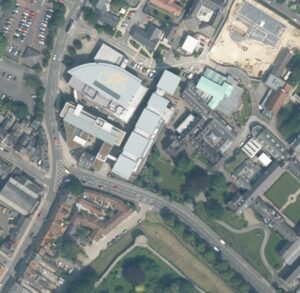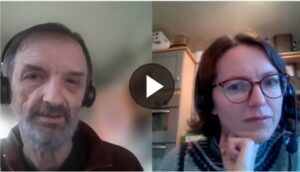For the Living Lab project 2022, we have decided to focus our attention on air pollution, and how it impacts us physically, socially, and emotionally. Throughout this project, we will be exploring interdisciplinary and creative methods of improving the urban environment, ways of disseminating information, and how best to engage the public in ecological issues. Working with Councillor D’Agorne, the deputy leader of the City of York Council, our research will help inform the council’s next Air Quality Action Plan. This opportunity means that students and staff research could influence local government decisions and public perception, having a long lasting and real life impact on York.
The consensus to focus on this topic came after Clare Nattress, a graphic design lecturer at York St John, monitored levels of air pollution in a cycle through the city. Her results showed that the junction at Lord Mayor’s Walk, an often congested traffic zone, had some of the highest levels of pollution in York. Nattress’ research has taken different artistic forms, such as an artist book. The data and evidence she has collated is being analysed by atmospheric chemists at the University of York and York St John’s Adam Odell, who is testing the particles on human cells.
In researching what methods are already in place to counteract air pollution, Cath Heinemeyer interviewed City of York councillor Andy D’Agorne. Since the 1990’s, the council have been measuring and assessing air quality, noting spikes of nitrogen dioxide and particulate levels in certain areas. The two discuss the efficiency of Air Quality Management Areas, Clean Air Zones, and the ‘Low Traffic Neighbourhood’ Initiative. Councillor D’Agorne also explains how air quality is a justice issue, with many local families and those living in more compact housing being disproportionately impacted. At the end of the semester, Councillor D’Agorne will be attending our research festivals as a host and as a citizen. He is interested to see how students will approach this project, and to see how different forms of research can inform or shape local government policy.

The Junction at Lord Mayor’s Walk
Through place-based learning we are encouraged to think about the ways in which we interact with our environment(s). Oftentimes ecological ideas can feel overwhelming in scale, we don’t know how to help or where to start, but in using a specific place we are given parameters to our study which may feel slightly more within our control. Thinking about the campus as an environment is an excellent way to engage with ecological awareness and socio-political dilemmas and theories. We are able to see how we are impacted in a multitude of ways, and that our human health is inextricably intertwined with nonhuman health (Clare; 2017). As Timothy Morton, professor in environmental humanities, argues in his book Dark Ecology (2016), place includes the nonhuman dimension, ‘[it] is no longer simply human’. Morton argues that it is critical we change our perspective from space to place. This means that we shift away from thinking of our environments as spaces to conquered, plundered, and exploited, and instead appreciate natural biodiversity and nonhuman agency, and become conscious of how our actions and ideas impact the world.
As an interdisciplinary project, module leaders are approaching it in several different ways. Modules engaging scientifically or mathematical range from data collection and analysis of pollution, to how these gases and pollutants impact the body, to critical maths education. Arts and humanities modules will engage the public to change social perceptions on transport, the politics of space, the challenges of urban policy of health justice. Projects can explore how we interact with the campus physically as well as emotionally. The Living Lab blog will be sharing updates and insights into these projects throughout the semester, highlighting exciting collaborations and project reflections.

